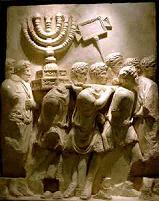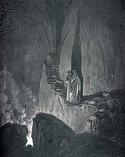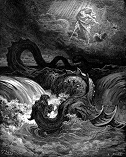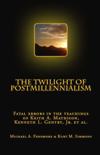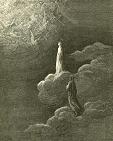The New Heavens and Earth
Kurt Simmons
There are many misconceptions about the new heavens and new earth mentioned in the Bible. Some believe that the eternal state is alluded to; others that a future paradise on earth is in view; still others that the New Testament is symbolized. However, none of these views enjoys support of the scriptures. The following is a verse-by-verse exposition of the promised new heavens and earth. We will conclude that the new heavens and earth were symbols for the prevailing conditions and changed fortunes of God’s people in the world under the reigning Christ following the tribulation of the last days; they look to New Testament times, but are not the New Testament itself.
The promise of the new heavens and earth occurs in Isaiah, where the prophet uses it to describe the happy circumstance of God’s people after the time of tribulation and persecution is past, and their enemies are destroyed. The prophecy moves alternately between the coming destruction of the rebellious among the Jews and the blessing of salvation upon those that obey. The historical context may look in the first instance to the nation’s captivity under the Assyrians and Babylonians and the return of the captivity under Zerubbabel, Ezra, and Nehemiah, but, unquestionably, the prophecy looks beyond these events unto the eschatological judgments and blessing of the Messiah. First, the prophet describes the Jews’ obstinate rebellion and unwillingness to obey God’s word, and the resultant wrath they would suffer:
I am sought of them that asked not for me; I am found of them that sought me not: I said, Behold me, behold me, unto a nation that was not called by my name. I have spread out my hands all the day unto a rebellious people, which walketh in a way that was not good, after their own thoughts…Behold, it is written before me: I will not keep silence, but will recompense, even recompense into their bosom…I will measure their former work into their bosom.” Isa. 65:1, 2, 6, 7
St. Paul applies these verses to the time of the Messiah, when the Jewish nation was resisting the gospel and persecuting the church, but the Gentiles were flowing into the kingdom like flocks of sheep. (Rom. 10:20) Those that had not formerly sought God had suddenly found him; but those whom God had eagerly sought after and entreated, refused his offer of grace. The like scenario played out in the days of the Assyrians and Babylonians, in which the prophets warned and entreated only to be persecuted and slain, yet strangers from among the Gentiles, like Nebuchadnezzar, obeyed the living God. The prophet next describes God’s salvation for the remnant of those that obey:
Thus saith the Lord, As the new wine is found in the cluster, and one saith, Destroy it not: for a blessing is in it: so will I do for my servants’ sakes, that I may not destroy them all. And I will bring forth a seed out of Jacob, and out of Judah an inheritor of my mountains: and mine elect shall inherit it, and my servants shall dwell there. Isa. 65: 8, 9
The prophet then alternates between the two in a series of verses (vv. 11-13), which conclude with the destruction of the wicked among the Jews, who leave their name (Israel) as it were a curse for God’s people (so hated were they among the nations), but God would call his faithful by a new name: Christian.
Behold, my servants shall sing for joy of heart, but ye shall cry for sorrow of heart, and shall howl for vexation of spirit. And ye shall leave your name for a curse unto my chosen: for the Lord God shall slay thee, and call his servants by another name. Isa. 65:14, 15
n the beginning of the gospel, the Roman world did not distinguish between Jews and Christians, for they seemed to be but sects of the same religion. Thus, the confusion caused the Jews’ name to be applied with disadvantage to the Christians in hatred and reproach. However, by the time of the destruction of Jerusalem, this was no longer true, and the world came to distinguish distinctly between the two. The Lord would thus slay the Jews, but assign a new name to his people. The term Christian is the divinely appointed name for God’s people. It was given first at Antioch of Syria. (Acts 11:26) Peter says if any man suffer as a Christian, let him not be ashamed, but to glorify God in this behalf. (I Pet. 4:16) Isaiah next describes the happy estate of his servants when the time of tribulation and persecution is past:
The former troubles are past forgotten…they are hid from mine eyes. For, behold, I create new heavens and a new earth: and the former shall not be remembers, nor come into mind. But be ye glad and rejoice for ever in that which I create: for, behold, I create Jerusalem a rejoicing, and her people a joy. And I will rejoice in Jerusalem, and joy in my people: and the voice of weeping shall be no more heard in her, nor the voice of crying. Isa. 65:16-19
The new heavens and earth describe the changed circumstances of God’s people, in which the former troubles were now forgotten. Whereas they had been under oppression and persecution by their fellow countrymen who refused to heed God’s word, they would see happier times. The time of national and personal sorrow under the Assyrians and Babylonians (in the first instance, but in the Messianic context, under the Jews and Romans,) would give way to a time when the faithful of God’s people would enjoy security and peace. The Jerusalem that had suffered siege and famine would give way to a Jerusalem that enjoyed an abundance of peace. The inhabitants of the new Jerusalem would “dwell every man under his vine and under his fig tree.” (Isa. 65:21) We should not mistake the poetic description of the new Jerusalem for the new heavens and earth. The prophet’s language saying “the wolf and the lamb shall feed together, and the lion shall eat straw like the bullock” refers only to “the holy mountain” of the Lord (Isa. 65:25), not the world at large. Only in the church do the conditions described prevail. Millennialists commonly make this very mistake by applying language intended only for the church to the whole world, supposing a time of universal peace is foretold.
The preceding portion of the prophecy makes no direct reference to the coming of Christ; we are told the rebellious would be destroyed, but not how. The prophecy continues in chapter sixty-six; this time, however, the prophet makes unmistakable reference to the destruction of the Jewish nation by the second coming of Christ. First, the prophet describes God’s anger for the Jews’ idolatrous devotion to the temple:
Thus saith the Lord, The heaven is my throne, and the earth is my footstool: where is the house that ye build unto me? And where is the place of my rest? For all those things hath mine hand made, and all those things have been, saith the Lord: but to this man will I look, even to him that is poor and of a contrite spirit, and trembleth at my word. Isa. 66: 1, 2
Stephen quoted this verse before the Sanhedrin when accused of saying that Christ would come and destroy the city and temple. (Acts 6:14, 15; 7:48-50) His point in quoting the prophet is to show that he was affirming nothing that had not been foretold centuries before. However, like a self-fulfilling prophecy, the Sanhedrin would not listen, and stoned Stephen. The Jews’ obstinate refusal to accept the gospel even while clinging to the empty temple ritual was foreseen by Isaiah, who thus foretold the coming destruction in the prophecy here. Hence, the prophet next describes God’s disdain for the temple cultus:
He that killeth an ox is as if he slew a man; he that sacrificeth a lamb, as if he cut off a dog’s neck; he that offereth an oblation, as if he offered swine’s blood; he that burneth incense, as if he blessed an idol. Yea, they have chosen their own ways, and their soul delighteth in their abominations. I also will choose their delusions, and will bring their fears upon them; because when I called, none did answer; when I spake, they did not hear: but they did evil before mine eyes, and chose that in which I delighted not. (Isa. 66:3, 4)
The offerings of the temple are likened to unclean and abominable things; they were no longer acceptable because Christ had carried his blood within the Holy of Holies. The continuing temple ritual was an implicit denial of Christ’s sacrifice. Next, Isaiah speaks to the persecution of Christians by unbelieving Jews and the promise of Christ’s coming:
Hear the word of the Lord, ye that tremble at his word; Your brethren that hated you, that cast you out for my name’s sake, said, Let the Lord be glorified: but he shall appear to your joy, and they shall be ashamed. Isa. 66: 5
The “appearance” of Christ is referred to by the writer of Hebrews, who says Christ as our High Priest would appear a second time to put his enemies beneath his feet. (Heb. 9:27) The apostle John seems to have this verse in mind when he exhorted his readers to persevere under persecution that they “be not ashamed before him at his coming.” (I Jno. 2:28) The appearance of Christ would be providential, not physical or visible, and would mark the destruction of Jerusalem and the relief of the church. This is clear from what Isaiah says next, describing Christ coming in wrath upon the nation:
A voice of noise from the city, a voice from the temple, as voice of the Lord that rendereth recompence to his enemies…For, behold, the Lord will come with fire, and with his chariots like a whirlwind, to render his anger with fury, and his rebuke with flames of fire. Isa. 66: 5, 15
Here is explicit reference to the coming of the Lord to destroy his enemies in the events culminating in the destruction of Jerusalem in A.D. 70, predictions repeated by Christ in his Olivet discourse. (Matt. 24, 25; Mk. 13; Lk. 21) We can know that the second coming is being described because the prophet portrays the new heavens and earth following the destruction of the city and temple. (Isa. 66:22-24; cf. Matt. 19:28; Rev. 21, 22) The prophet states that those who escaped the siege – Christians who obeyed Jesus’ warning to flee when they saw the city compassed about with armies (Lk. 21:20, 21) – would declare God’s glory (preach the gospel) among the Gentiles. (Isa. 66:19) Isaiah states that these would become the spiritual “priests and Levites” (cf. I Pet. 2:5) of the New Testament in the new heavens and earth:
“And I will also take of them for priests and for Levites, saith the Lord. For as the new heavens and the new earth, which I make, shall remain before me, saith the Lord, so shall your seed and your name remain. And it shall come to pass, that from one new moon to another, and from one Sabbath to another, shall all flesh come and worship before me, saith the Lord. And they shall go forth, and look upon the carcases of the men that have transgressed against me: for their worm shall not die, neither shall their fire be quenched; and they shall be an abhorring unto all flesh.” (Isa. 66:21-24)
“All flesh” is equivalent to “every creature” and “all nations” of the Great Commission (Matt. 28:18-20; Mk. 16:15, 16). “Worshipping before the Lord” points to the assimilation of the Gentiles into the kingdom (church). Those whose carcasses were eaten of fire and worms refers to the bodies of the Jews who perished in the ravages of war, famine, and pestilence during the siege. Josephus reports that eleven-hundred-thousand Jews (1.1 million) were slain in the siege of Jerusalem.[1] These were cast out of the city into the valley of Gehenna during the siege, where they lay swollen and putrefied, eaten of maggots and worms.[2]
This brief survey shows that the new heavens and earth spoke to the time when the church would emerge victorious after a time of persecution. Whereas they had been scorned and rejected, put out of the synagogue and even put to death, the Lord would vindicate his gospel and avenge his servants’ blood. The Jews would be destroyed in the war with Rome, but the church would go on to inherit the world.
Other Aspects of the New Heavens and Earth
The above represents the new heavens and earth as portrayed by the prophet Isaiah. John also treats of these in the book of Revelation. He does not change what Isaiah wrote, but adds a few particulars of his own.
And I saw a new heaven and a new earth: for the first heaven and the first earth were passed away; and there was no more sea. And I John saw the holy city, new Jerusalem, coming down from God out of heaven, prepared as a bride adorned for her husband. And I heard a great voice out of heaven saying, Behold, the tabernacle of God is with men, and he will dwell with them, and they shall be his people, and God himself shall be with them, and be their God. Rev. 21:1-3
With the defeat of the church’s enemies, John sees a new heaven and earth. It is distinguished from the first heaven and earth only by the absence of the sea, and the presence of God dwelling amidst his people in the church (the new Jerusalem). Under the old economy, God dwelt with man only in shadow and type. The temple merely foreshowed “good things to come.” (Heb. 10:1) From the time of Adam’s fall to the cross, the barrier of sin - portrayed by the veil in the temple - separated man from God. The veil was rent in twain in Christ’s cross (Matt. 27:51), showing man the way back into the presence of God was through Jesus’ blood. John thus sees the consummation of God’s redemptive purpose, when face-to-face communion with his people is restored through Christ in the church. (“And they shall see his face” Rev. 22:4; cf. Heb. 10:19, 20) The absence of the sea points to the fact that all men approach God on equal terms. Seas are natural barriers, separating earth’s people. In Revelation, the sea symbolized the Gentiles; the earth or land, the Jews. Under the new economy, those distinctions are removed and all men have access to God equally. The gates of the city (church) are always open in every direction of the compass, showing that men from all over the world are invited to enter and find salvation and communion with God. (Rev. 21:13, 25) Thus, Paul could say to the Gentiles:
But now in Christ Jesus ye who sometimes were far off are made nigh by the blood of Christ…Now therefore ye are no more strangers and foreigners, but fellowcitizens with the saints, and of the household of God. Eph. 2:13, 19
Of course, the new heaven and earth are not the new covenant. The city (the church) is the covenantal habitation of the saints. Outside the city are the lost; those that have not obeyed the gospel: “For without are dogs, and sorcerers, and whoremongers, and murderers, and idolaters, and whosoever loveth and maketh a lie.” (Rev. 22:15)
Conclusion
The new heavens and earth were symbols for the prevailing conditions and changed fortunes of God’s people in the world under the reigning Christ following the tribulation of the last days; they look to New Testament times, but are not the New Testament itself.
Notes:
[1] Josephus, Wars of the Jews, VI, ix, 3. This figure does not include that perished in foreign cities or died in battles throughout the rest of the Judah and Galilee.
[2] Josephus, Wars of the Jews, V, xii, 3, 4.
To receive Kurt Simmons’ e-mail newsletter, The Sword & The Plow, click the Subscribe link:
All rights reserved.
